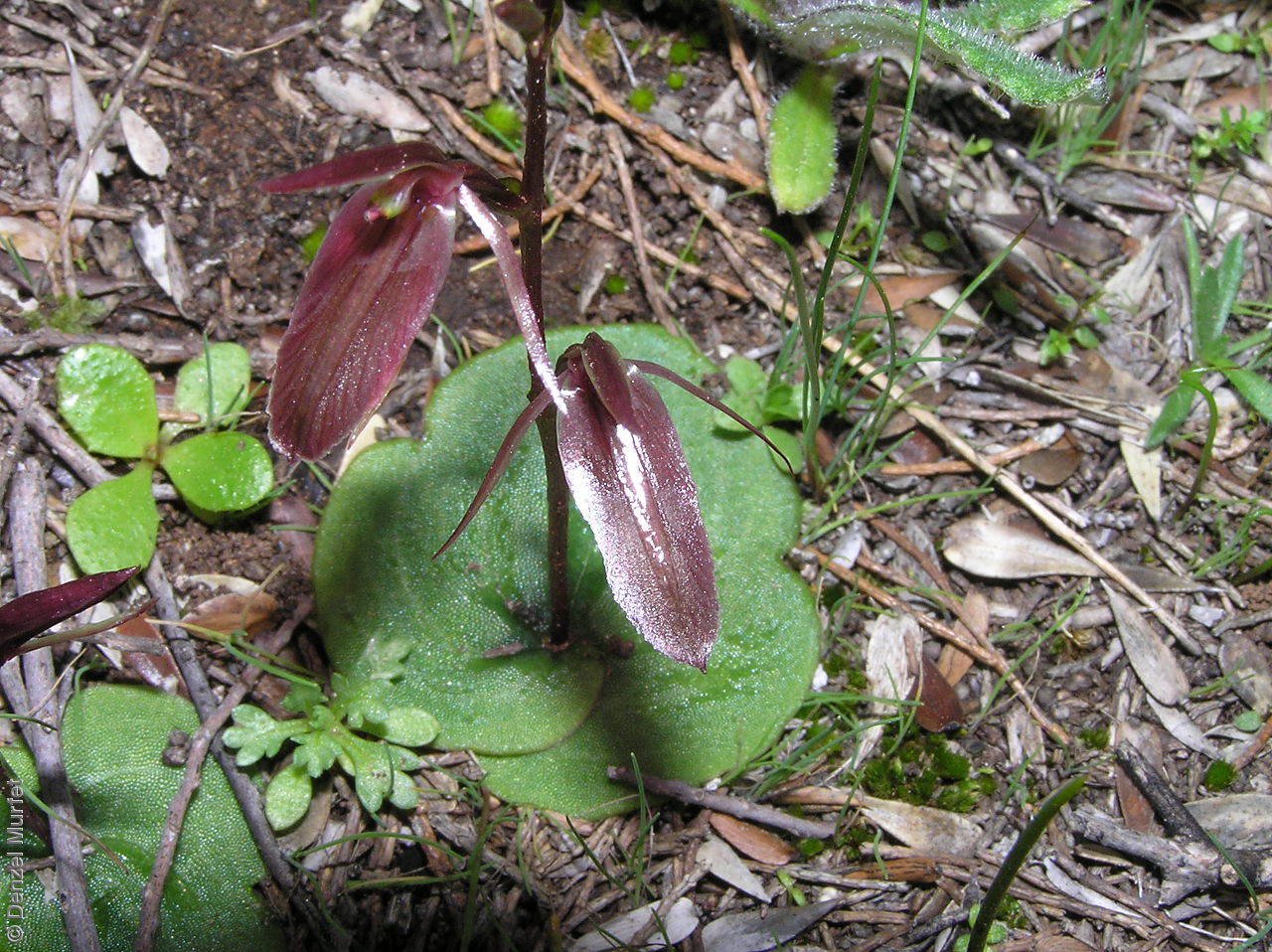
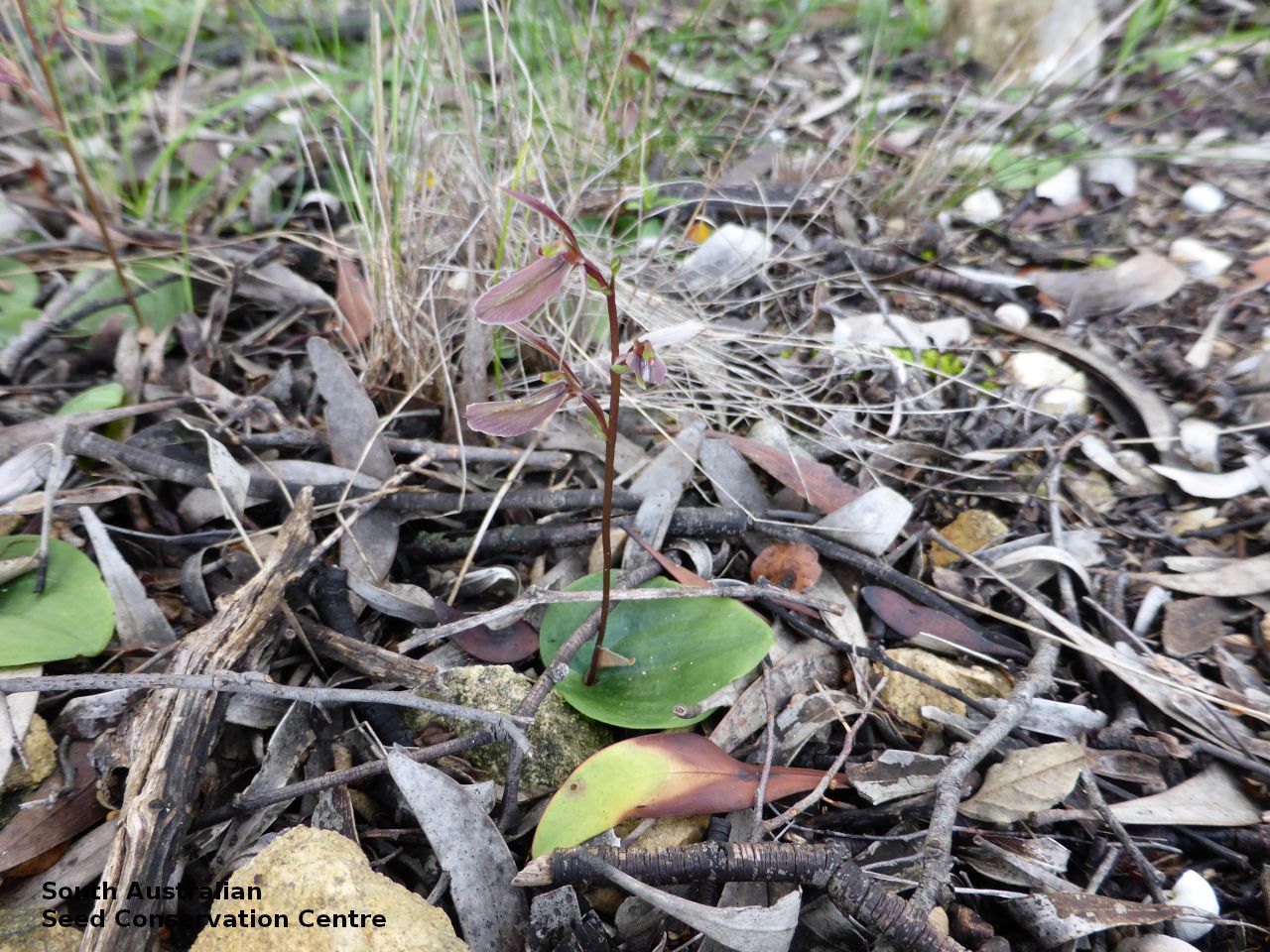
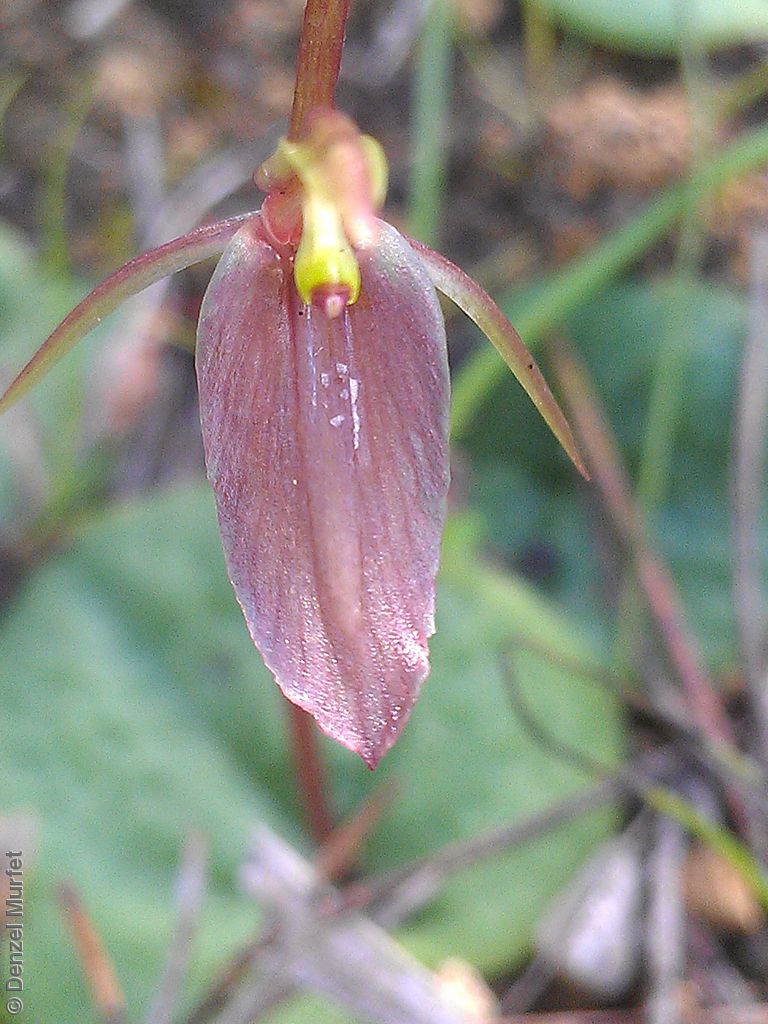
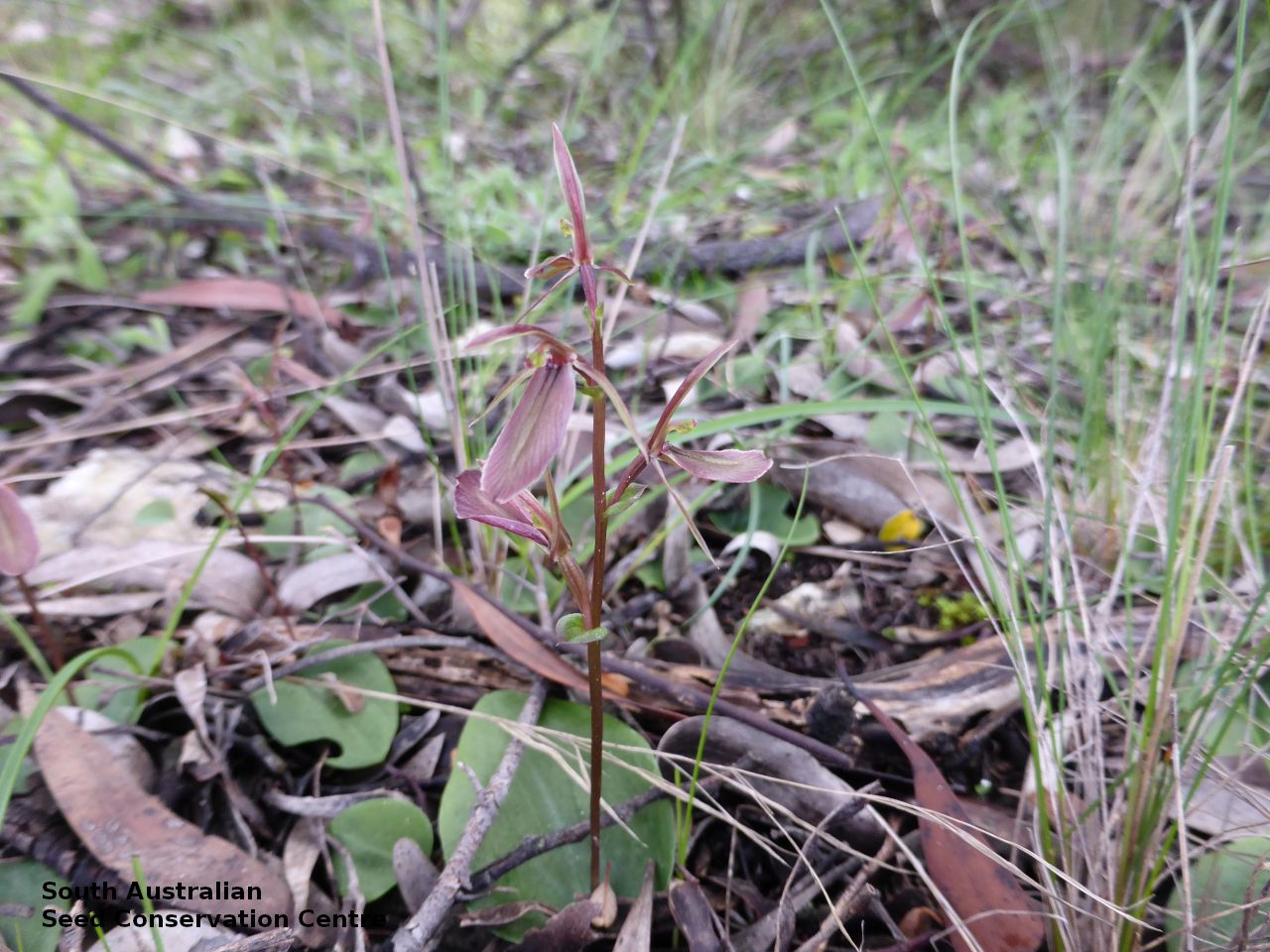
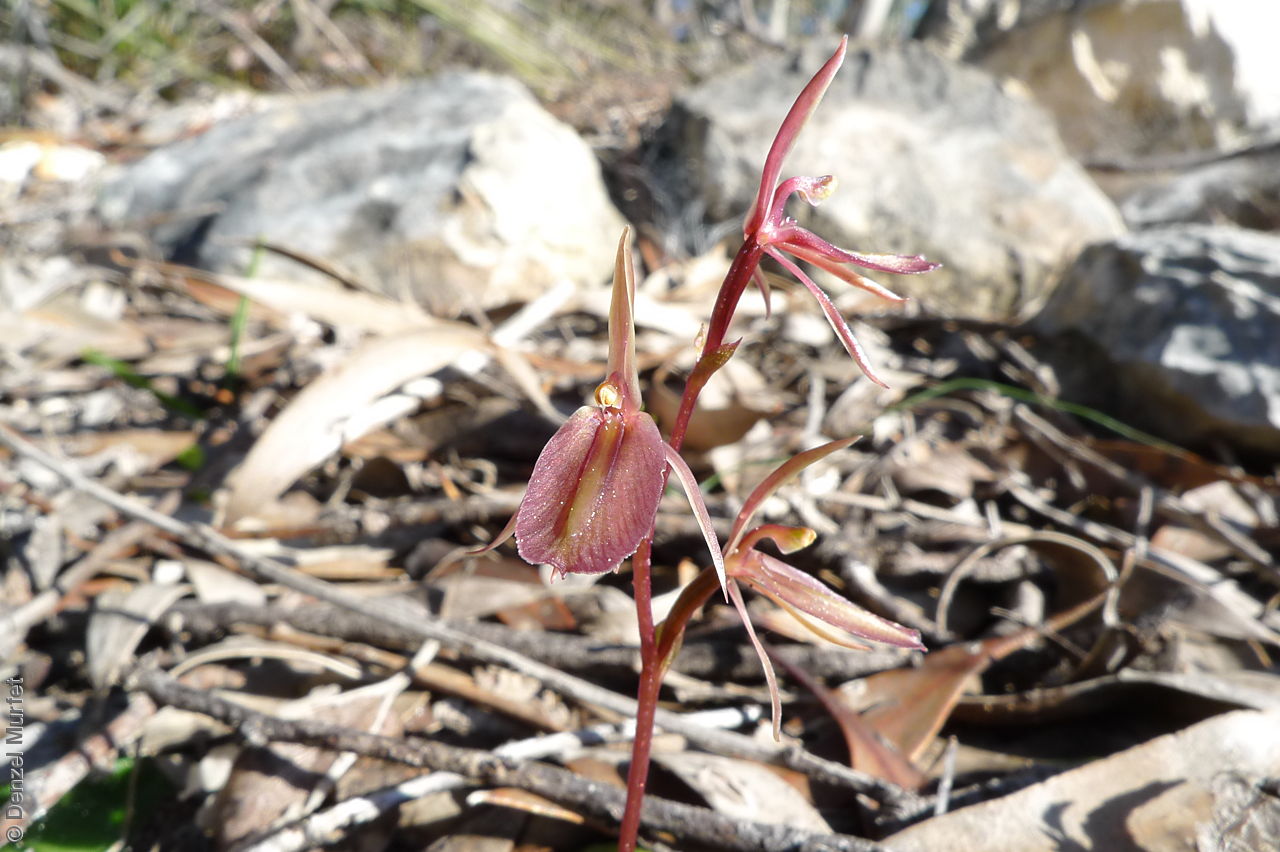
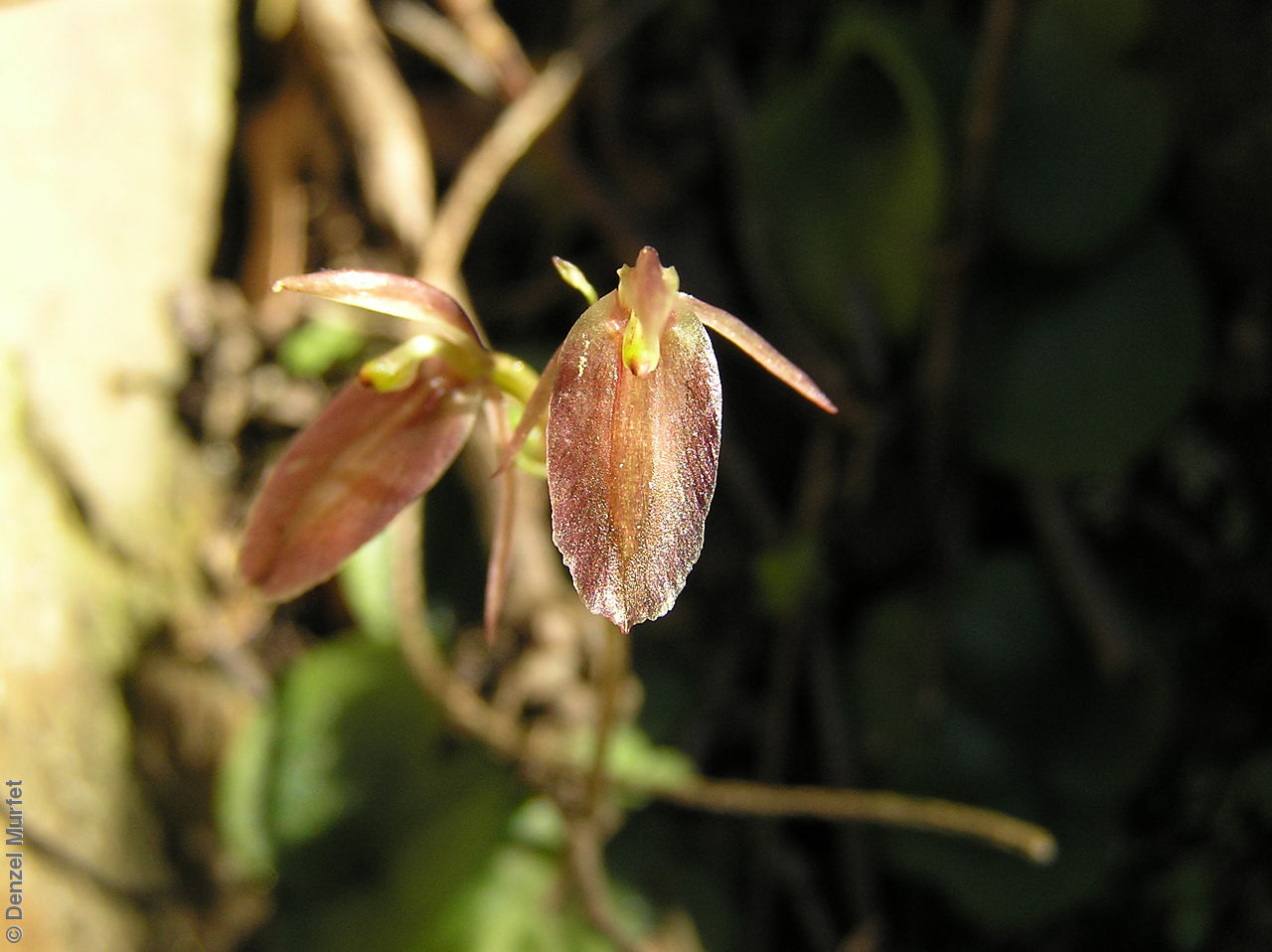
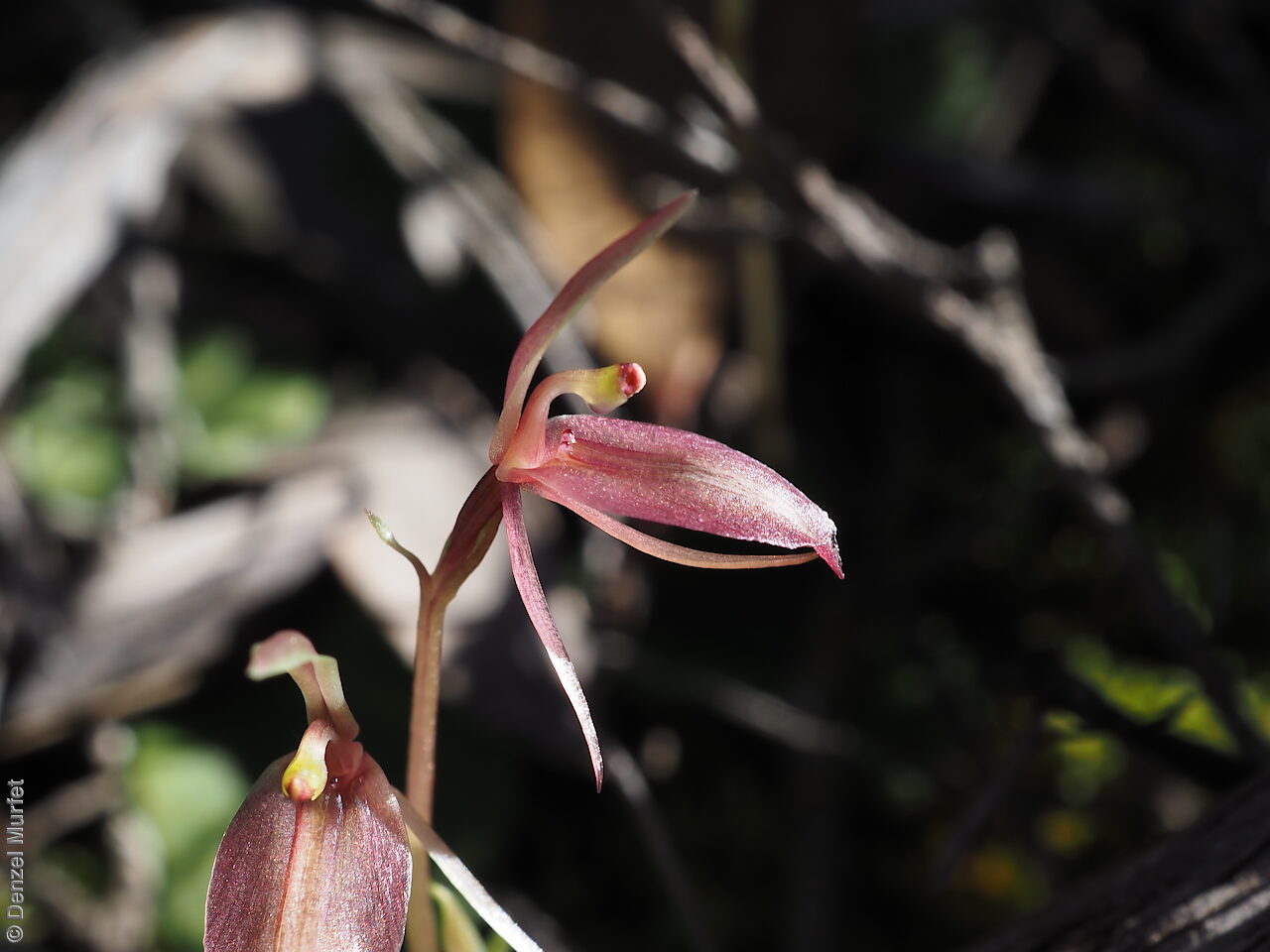
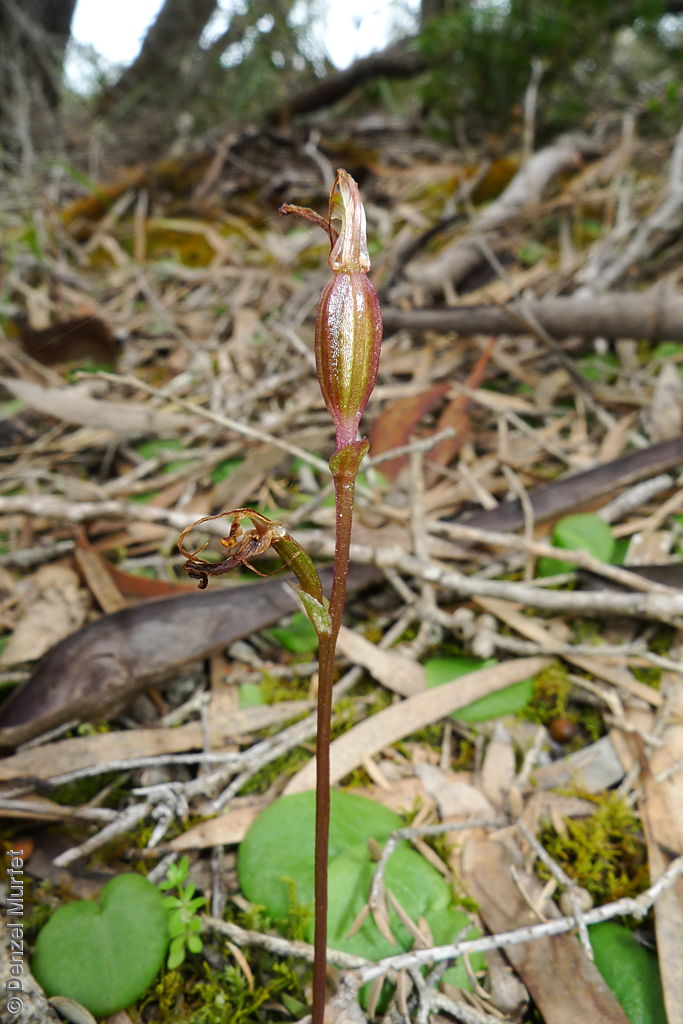
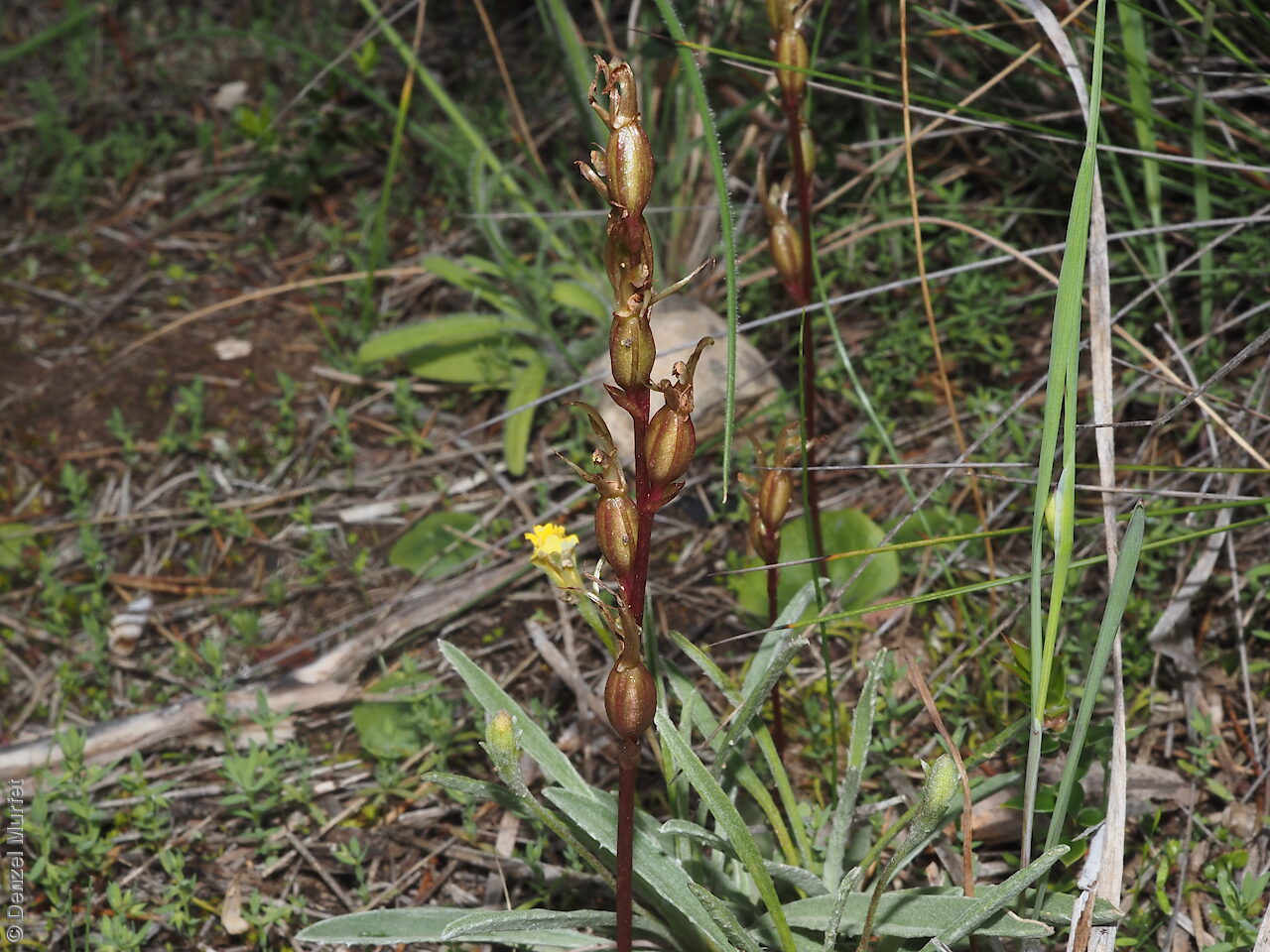

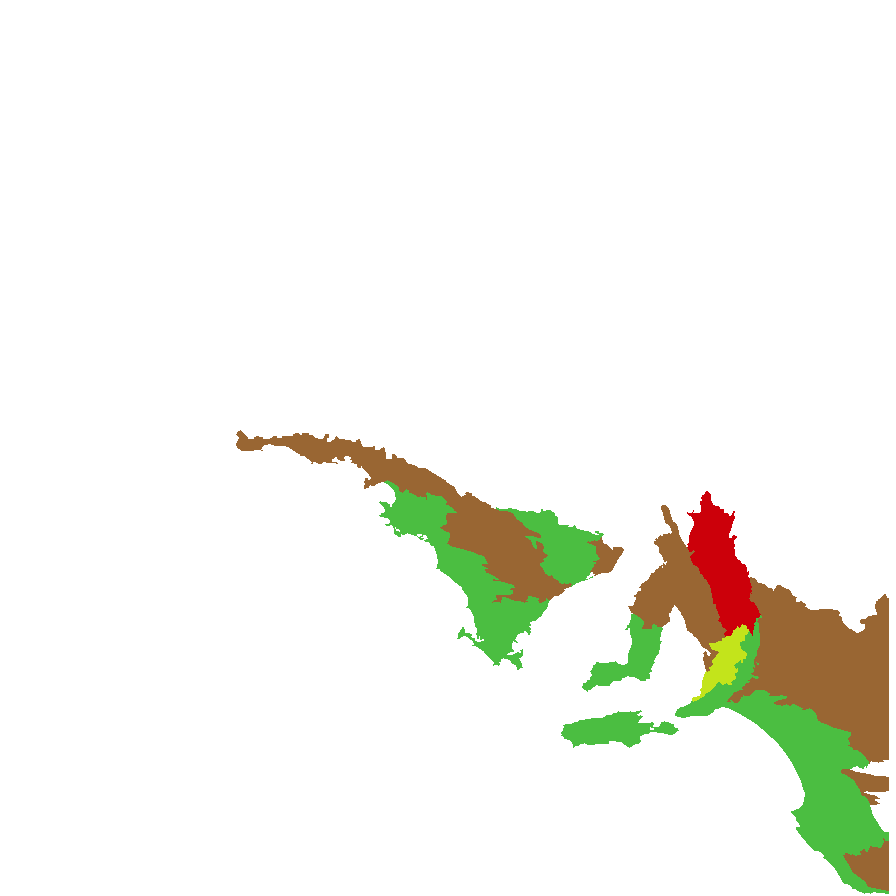
Botanical art
Prior names
Acianthus reniformis, partly
Common names
Winter-flowering Gnat-orchid
Robust Gnat-orchid
Etymology
Cyrtostylis from the Greek 'kyrtos' meaning curved or swollen and 'stylis' meaning column, referring to the fluted enlargement of the column below the stigma. Robusta from Latin meaning well developed, robust, alluding to this species being more robust than C. reniformis, a species under which it was included until 1987.
Distribution and status
Found in the southern part of South Australia, from the Eyre Peninsula to the lower South-east, growing in ishrubland, woodland and forest. Also found in Western Australia, Victoria and Tasmania. Native. Common in South Australia. Rare in Tasmania. Common in the other States.
Herbarium regions: Eyre Peninsula, Northern Lofty, Murray, Yorke Peninsula, Southern Lofty, Kangaroo Island, South Eastern, Green Adelaide
NRM regions: Adelaide and Mount Lofty Ranges, Eyre Peninsula, Kangaroo Island, Northern and Yorke, South Australian Murray-Darling Basin, South East
AVH map: SA distribution map (external link)
Plant description
Small terrestrial orchid with a single heart-shaped, kidney-shaped or almost round leaf to 60 mm long and 40 mm wide, light to medium green above, partially transparent below. Flowers 2-7 pinkish red along a stem to 300 mm high. Pedicel to 11 mm long with a bract at its base. Dorsal sepal erect and curved forward, linear but tapered, to 13 mm long and 2.5 mm wide. Lateral sepals are linear, to 11 mm long and 1 mm wide and curve forwards or downwards. Petals are similar in size and shape to the lateral sepals and curve forwards or slightly downwards. Labellum oblong, to 15 mm long and 6 mm wide and slopes slightly downwards with a few serrations near its pointed tip. This species is distinguish from the other Cyrtostylis species by being taller, with more flowers and larger floral parts, distinctly different coloured leaves and earlier flowering. Flowering between June and August. Fruits are brown papery ellipsoid capsule, reddish when immature. Seeds are very small, golden-brown, ellipsoid with a long cylindrical translucent brown mesh-like covering.
Seed collection and propagation
Collect seeds between July and October. Collect fat capsules as they start to dry and turn brown. Pods will split and release the seeds quickly and will require monitoring. To increase the chances of collecting mature pods, it is recommended that a small breathable bag (ie.Organza bags) be used to enclose the developing capsules. Place the capsules in a container that will hold fine seeds, and leave to dry for a few weeks or until the capsules split.Then carefully hold the capsule and tap it gently to release the seeds. Store the seeds with a desiccant such as dried silica beads or dry rice, in an air tight container in a cool and dry place or in liquid nitrogen.